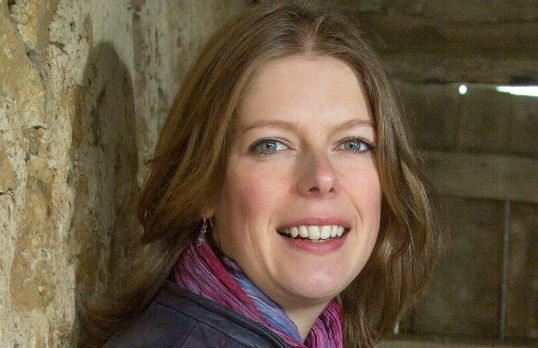Clare gained a degree in Interior Architecture before studying for her Part 2 at Oxford Brookes University while working part-time at a large multi-disciplinary practice. Clare set up Clare Nash Architecture in 2011 which specialises in energy efficient rural design. Clare’s book on contemporary vernacular design in housing will be published in 2016.

I had an idyllic childhood growing up on a farm. My parents used to let us roam around, build dens and do all sorts of adventurous things. It meant we learnt to be really capable and take responsibility for our own actions.
Diverse role models from different social and economic backgrounds are vital in proving that if you are incredibly passionate about what you do, you can make it as an architect.
My parents were also prepared to take a risk. They were tenant farmers on a low income who got the opportunity to buy their farm and they went for it. They had an enormous loan and I remember it was a very stressful time for them, but they ended up owning the farm and living in a lovely barn conversion. It showed me that if you’re prepared to take a risk then good things can happen and I’m sure that experience affected my own decision to set up as a self-employed architect.
Initially I studied interior architecture because I had this idea that architects had to be very clever and I’d never seen myself as particularly academic. I’m more of a practical person and don’t like sitting still for hours poring over books, so I thought I wouldn’t last the full seven years. I later decided to do my Part 1 and then went on to qualify through part-time study. I think it’s a route that should be promoted much more as the fees were a lot cheaper; I was able to work in a practice at the same time and all the experience I was getting fed into my studies. It made becoming an architect more practical, more accessible and less intimidating.
I started out working in a small village architecture firm before moving to a large international practice. At first I found it pretty overwhelming because I went from designing one-off houses to a £50 million project working with high-pressure developers. I felt like a fish out of water and at times it was awful. My confidence took a knock but then I started working on a new team with a very effective leader and I began to find my feet. From then on I just loved it.
I decided to do my Part 1 and then went on to qualify through part-time study. I think it’s a route that should be promoted much more as the fees were a lot cheaper. It made becoming an architect more practical, more accessible and less intimidating.
I think some practices can be pretty tough places and it’s sad that many of them get students doing the really boring stuff that nobody else wants to do. I guess it’s seen as a rite of passage but it’s not the best way to harvest talent and inspire people to stick with architecture. Many practices also have a culture of overtime, which can be a turn-off.
You can’t wave a wand to change the workplace, it takes time and effort but I think we need to start talking about what will make practices more attractive to young men and women. We also need to let people who are less well-off know that architecture can be for them. Diverse role models from different social and economic backgrounds are vital in proving that if you are incredibly passionate about what you do, you can make it as an architect.
My own experiences have shaped how I approach architecture and how I treat the people I work with. I think builders start out expecting me to be arrogant because I’m an architect but I really don’t have the attitude that I’m better than anyone else. Each person has their own expertise and I rely on them to deliver a successful project.
The best thing about having my own practice is having flexible hours and being in control of my own destiny. I am in a position where I can choose to focus on eco work, which is my passion. As a small practice, I also enjoy the variety of getting to do everything - I'm the business manager, the marketing person and I go out to meet clients, as well as doing the design work. I love that I get to see a project through from start to finish. Now that my practice is growing I am also enjoying bringing on new talent.
Architecture is very broad and has given me many opportunities. I have managed to combine my own practice with teaching and writing a book about sustainable housing projects. It means my professional life is very fulfilling and I am never bored.









